This Post May Contain Affiliate Links
In compliance with the FTC guidelines, please assume that some of the links on these posts and sites are affiliate links (Amazon or others) from which I may earn a small compensation/commission from sales of certain items at no extra cost to you from qualifying purchases.
Anytime you see a link that looks like “astore.com, paid link, #ad, #CommissionsEarned or Amazon/Amazon.com/ca,”… it can be assumed that it is an affiliate link.
To learn more, follow the link below.
Unveiling The Artistry Of The Scalloped Guitar Fretboard
Whether you’re a seasoned guitarist searching for new innovative concepts/tools to elevate your playing or a curious and inspired novice eager to explore the realm of fretboard craftsmanship, this post is for you.
In this comprehensive article, we’ll unravel the mysteries of the Scalloped Guitar Fretboard for electric models, shedding light on its history, construction, and the unique advantages and disadvantages it offers guitarists.
Our exploration is your gateway to a richer and more expressive musical journey by answering questions on this topic you may not know…Yet!
What Is A Scalloped Fretboard
Scalloping is a process of ‘Scooping out” grooves off the top layer of fingerboard wood between frets, creating a “U” or “Concave” shape instead of a flat surface.
The technique produces a similar feel to Tall or Jumbo frets, leaving the player with finger string contact only and generally less to no finger contact surface with the fretboard itself. (See image)

A “U” shaped scalloped leaves a taller fret design with less contact to the Fretboard-Image courtesy of Amazon-Tap Image to see more.
Hand & Pre Done
Commonly, this process is done by a Luthier carefully filing the wood between frets with considerable time/energy and by hand.
Still, with the advent of the Modern Milling process, the player can purchase pre-scalloped guitar necks as replacement aftermarket options at affordable prices.
History Of The Scalloped Fretboard
Although Scalloped necks are not a standard option, especially on most production-line main-brand models, this feature existed in the East before guitars were invented.
The Veena (also spelled Vina) style Chordophone is one of India’s oldest instruments, going back to approximately 1500 BC.
Chordophone is a name that refers to a class of instruments in which a string is stretched producing sound. (i.e., Bows, Harps, Lutes etc.)
This Instrument has little or no wood between the frets and is designed to produce rapid micro-tonal note variations significant to traditional Indian music. (See image)

The Veena/Vina is a chordophone instrument with scalloped fingerboards.-Image courtesy of Wikipedia and is licensed under the CC BY 3.0
Not All Scalloping Done The Same
Scalloping is not the same across the board; you have different process variations for specific needs and wants but it generally falls into 3 categories.
- Extreme Scalloping – This type has lateral intrusions along with the standard vertical hollows, which provide additional versatility in note control but can come at the cost of substantially reducing the rigidity of the neck.
- Full Scalloping – This is a more popular version of this neck design wherein the entire fingerboard is done the same from the first to the last fret, as you would see on a Yngwie Malmsteen Signature Stratocaster. (See image)

A Yngwie Malmsteen Signature Stratocaster with a Rosewood “U” shaped Scalloped Fingerboard.-Image courtesy of Amazon.com.
- Partial Scalloping – This keeps the traditional fretboard mostly unchanged except for the higher neck regions where scallops appear as half or full frets, designed for better string grab access and control, making it easier to execute high-register solos, like on Megadeths Kiko Loureiro’s guitar neck which is partially scalloped from the 12th to the last fret.
More Signature Guitars With Partial Scallops
The Steve Vai JEM/PIA has a scalloped fingerboard only on the 21st to 24th frets, with that option coming directly from the factory. (See Image)
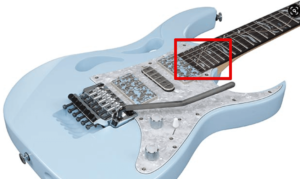
Image of the MIJ Ibanez PIA 3761C in Blue Powder w/scalloping on the 21-24th frets.-Image courtesy of Ibanez.com
Michael Schenker has a semi-scalloped fingerboard on his 1984 Greco MSV650 Signature model from the 12th to 23rd frets, but only on the first strings. (See image below)
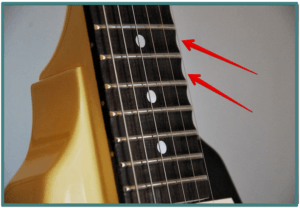
The 1984 Greco MSV650 Michael Schenker Signature Flying V with a partially scalloped neck on the first strings -Image courtesy of Wikimedia Author Freebird and is licensed under the Creative Commons Attribution-Share Alike 2.0 Generic.
Different Genres & Artistic Expression
Despite how we associate this type of design with shredding /virtuoso rock guitarists, Scalloped fingerboards are used in many other modern/alternative musical genres. They can become a part of a player’s unique artistic expression and style.
Scalloped Guitars & John Mclaughlin
John Mclaughlin – Used fully Scalloped fretboards on acoustic and electric guitars in live performances from 1978 to 1979. His music blended Jazz fusion, Classical Indian, Flamenco and Blues.
The exotic Eastern sound he wanted could not be created on a non-scalloped guitar neck without sliding the string sideways on the fret.
Because there is no wood behind the finger as a barrier, McLaughlin found that the Scalloped neck design could provide similar rapid microtonal note variation as on the Veena.
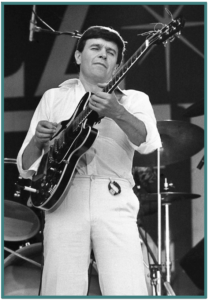
An Image of McLaughlin performing in The Netherlands, 1978- Image courtesy of Wikipedia and is licensed under the CC BY-SA 2.0
Is A Change Of Technique Required?
Yes!
Transitioning to a Scalloped fingerboard may have a slight learning curve, requiring a change of technique and time to adapt to the new feel.
Also, note that even though some techniques will be more challenging, some will be easier.
Here are some of the areas that we found most relevant.
Change Of Finger Pressure
Getting the wood of the fretboard out of the way leaves you with just a fingertip sitting on the string for contact and not the fretboard itself, affecting feel and play.
Playing aggressively and digging into the fretboard can result in pressing the strings out of tune, causing variances in intonation.
Intonation Variances
Because of the greater sensitivity in the relationship between finger pressure and fretboard, intonation variances are when you accidentally press the notes “out of tune,” which can happen quickly.
The fret itself lets you know when to stop applying pressure based on the sound of the notes, which emphasizes the importance of a good Ear.
Too much finger pressure can push beyond the pitch you are trying to reach by raising the fretted note too sharp. A tonal division of a 1/2 to a whole tone can be expected, affecting your solo play.
Change On String Bending & Vibrato

Your fingertips slide under the strings more comfortably than on a regular fretboard enabling the player to gain leverage or grip with a lot more ease and control,
This results in pulling off some upward-pitch bends that you can’t do on a regular neck, along with Vibrato techniques feeling more effortless, giving rise to more expression over the notes.
String bending, while feeling more effortless, can be challenging to control intonation and require focusing on your technique and Ear.
Change In Chord Playing
Like soloing, playing chords on this fretboard style is more difficult because applying too much pressure can cause you to bend chord notes out of pitch. This detail makes playing chords rather tricky.
Generally, a scalloped board is less suitable for rhythm guitar playing, chord strumming, and fingerstyle techniques and is far better suited to the lead or melodic guitarist.
Change of Touch
Your touch will need to be lighter by reducing the tension in your fretting hand, typically much more than what the average player doles out, and this will change your technique and become apparent in scale playing, legato, hammer-ons/pull-offs and overall style.
Does This Mean You Will Play Faster?
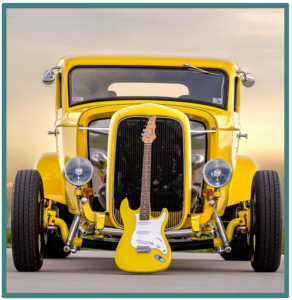
No!
This type of fingerboard is not a ticket to speed/dexterity or to faster playing, and in the beginning, it probably will slow you down based on how heavy-handed you are.
The only way this can contribute to the speed of play is by paying attention to your technique, mastering left/right-hand control, and being deliberate with your touch and attack.
Although many guitarists will be disappointed that a Scalloped fretboard isn’t the key to faster playing, they should appreciate that it will help them refine their technique, which in the long run is better.
Does String Guage Help?
Yes!
Because playing a Scalloped fingerboard requires careful pressure, your string gauge will help in getting control over your touch and sound.
If you play with a heavier gauge string, you will need to stress less about finger pressure; conversely, the lighter the string gauge results in more finger pitch variances.
Guitar virtuosos like Yngwie Malmsteen have a signature string line that starts at .08-.46 to accommodate his playing preference.

Custom Fender 073-3250-600 Yngwie Malmsteen Signature Electric Guitar Strings_Image courtesy of Amazon -Tap to see more.
Do Scalloped Fretboards Affect The Tone?
Yes!
The reduced amount of wood-dampening between the strings and the frets allows for more vibration, improved sustain, crisp sound and increased clarity, along with enhancing the guitar’s harmonic overtones, which can be particularly appealing for expressive lead guitar work.
Can Scalloping Be Done With Specialized Inlays?
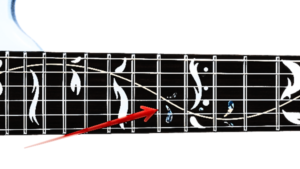
The PIA 3761C Vine Of Life Inlay -Image courtesy of Amazon.com
No!
Depending on your level of Scallop and how intricate your inlay designs are, filing away the top wood can affect the inlays of the guitar.
Simple dots or block inlays usually survive the modification well, and again, if you are unsure, talk to your guitar luthier before looking to get this done.
Are Scalloped Fretboards Suitable For Anyone?
No!
If you are a new player, you may find these too tricky and opt for a traditional fretboard until you establish some technique.
For more established players, Scalloped fingerboards are not universally preferred. Many guitarists find it challenging to control and like the traditional feel of an unscalloped fingerboard.
What’s The Point Of Having A Scalloped Fretboard?
A Scalloped Fretboard has nothing to do with playing faster and everything to do with control, precision and freedom of tonal variance, especially for certain types of guitar playing styles.
How Much Does A Scalloped Fretboard Cost?
 Personal Preference
Personal Preference
Scalloped guitar fingerboards can offer advantages in terms of playability and tonal characteristics, especially for lead guitarists who desire a brighter and more expressive sound.
It requires adjustments to playing technique and varies from player to player.
Some guitarists love the enhanced playability and tonal characteristics, while others find it more challenging to control and prefer a traditional fingerboard.
As with any guitar customization, it’s essential to consider your preferences, playing style, and musical goals before deciding whether a Scalloped fingerboard is the right choice.
Appreciation For The Masters
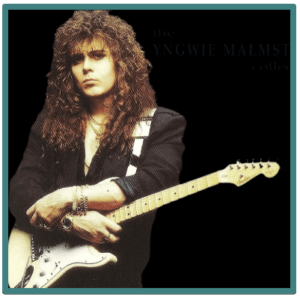
Yngwie Malmsteen -Image courtesy of Wikimedia -Author Yngwie232- and is licensed under the Creative Commons Attribution-Share Alike 4.0 International.
Once you play a scalloped neck, you can quickly appreciate the genius of Yngwie Malmsteen and how refined his left/right hands and Ears are.
His technique of lighter touch, precise intonation, speed, flawless bending, pull-offs, and tapping is masterful.
Ear Training
This is not often discussed but is vital as a player.
Developing your Ear allows you to hear note choices with more depth. It takes your playing to another level and should be at the top of your musical priorities, for a masterful ear is the key to the musical expression on the guitar.
Yngwie Malmsteen on Ear training…
“When people ask me for advice, I respond by saying…Play with your Ears.
When it sounds good, it’s good.
I wasn’t thinking about what I was doing, but I knew what I wanted to hear, and I would work very hard until I got to what I wanted.”
A Practical Option
For those who do not want a Full Scalloped Neck and have to adjust their entire playing technique & style to accommodate the new fingerboard, look at a Partial scallop, especially in the higher registers of the neck’s fingerboard.
This, I think, gives you the best of both worlds.
- You will not have to worry about playing chords in the higher registers
- Intonation will be less of an issue, for your focus will only have to be on the select fewer frets
- You will not have to change your playing or technique completely; also…
- The extra finger grab in the high fret regions is an added plus.
Ultimately, shooting for impeccable guitar technique and partial Scalloped frets is a great combination.
Did You Like This Article?
Check out my article on Truss Rod Adjustment
Also…
Leave me your comments in the section below, and if you would like me to review a favourite guitar or have any other guitar shop questions that were not answered in the above article.
As always, stay the course and keep playing.
Feature Image Scalloped Maple Fretboard On a YJM Strat Courtesy Of Wikipedia
Guitarist bending a string on a fingerboard Image by Joel from Pixabay
Yellow Hotrod and Guitar Image by Lisa Johnson from Pixabay
Guitarist singing live Image courtesy of stocksnap from Pixabay
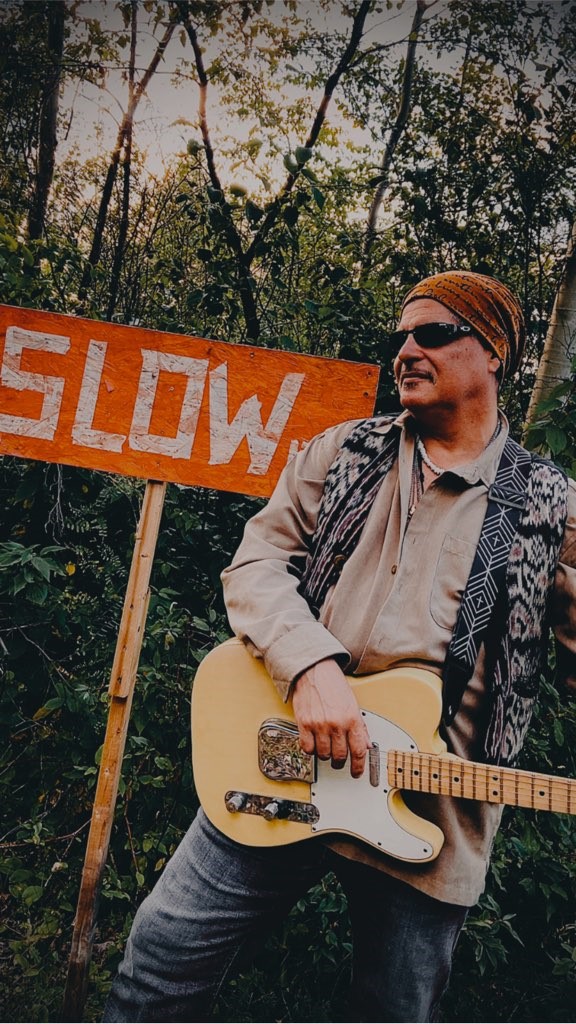
Starting A Journey At 7 Years Of Age, The Love For The Guitar Only Became Stronger Going Into My Teens. This Leading To An Exciting Time Of Teaching, Performing, And Recording. Join Me Now As We Can Bring The Love Of This Instrument To Other Musicians Globally.





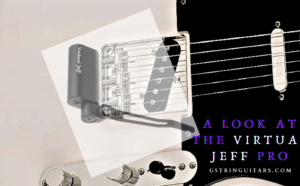
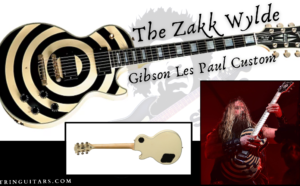
I found your article on scalloped guitar fretboards to be highly informative. Your detailed explanation of the benefits for advanced players is insightful. Have you personally experimented with a scalloped fretboard? I’d love to hear about your experience and whether it significantly impacted your playing style.
Additionally, your mention of potential drawbacks, especially for beginners, is crucial. It highlights the importance of understanding one’s playing level and style before making such a modification. Have you come across any specific techniques or exercises that can help players transition to a scalloped fretboard more smoothly? Your expertise on this subject is greatly appreciated. Thanks for shedding light on this fascinating aspect of guitar customization!
Good day Pasindu
It was great to meet you, and thank you for coming by the site and leaving your thoughts.
Also, your feedback on the post is appreciated.
To answer your questions, I have played with this type of necks on both Full and Partial scallops.
Transitioning to a full scallop from a traditional fretboard, is easier if you have been playing guitar for some time and can adjust your techniques to accommodate the differences in designs.
So i would suggest that if you want to take on a FULL scalloped neck, just start by practicing scales and bending as you would any other guitar exercise, but get used to how that “feels.” It’s a learn and adjust as you go.
Like what was mentioned, I think partial scallops are the key and the best of both worlds, like on the Ibanez JEM or PIA.
One of my guitars having scalloped frets just on the higher registers has been a perfect addition to this guitar’s overall playability. And not having it on some of my other guitars feels like it’s missing something.
I hope that helps
Do not hesitate to read more and leave us your thoughts in the future
Cheers
Dino@gstringuitars
Sorry to help fill in one more of your question’s about it impacting my playing style, it has.
What it forces is a lighter touch, and anyone who knows the difference between woodshedding and live performances can tell you how it differs dramatically, from having a relaxed fretting hand in your recording studio, and it tensing up playing live.
So this design really enforces the need for a lighter touch and relaxed fretting hand, which has impacted my overall approach to live playing.
Thanks again.
Dino@gstringuitars
Hello, thank you for this detailed look at the scalloped guitar fretboard. I learned a ton about how it is different from the traditional fretboard. Your article explains very well what are the modifications like the brighter and more intense sound, the greater range of nuances, the strings vibrating more freely, and allowing for the notes to sustain for a longer time. I can see how it isn’t suited for beginners if the player needs to know “when to stop applying pressure based on the sound of the notes”. It does require a really good ear!
Hello Caroline
Its nice to have a fresh set of eyes on this topic and how it comes across to the novice or non player. This neck design is not for the feint of heart but with a little focus and dedication can be a great asset to any player.
But In my opinion its still best for players who have some level of skill or having the combination of scalloped frets on the higher neck register for the ease of playing.
Again thank you for your thoughts and feel free to leave your comments on some of our other posts, like the 6 String vs 7 String Guitar.